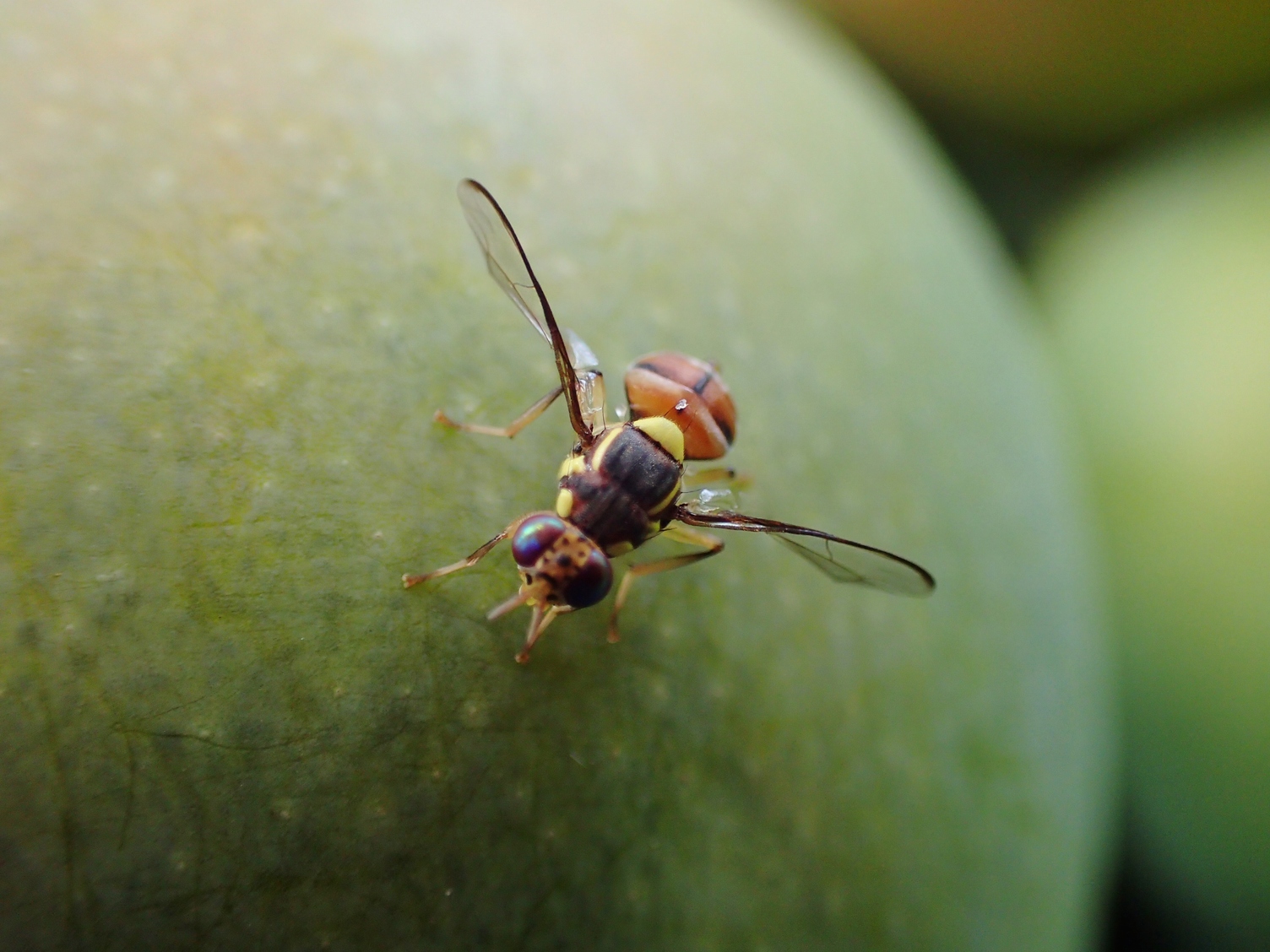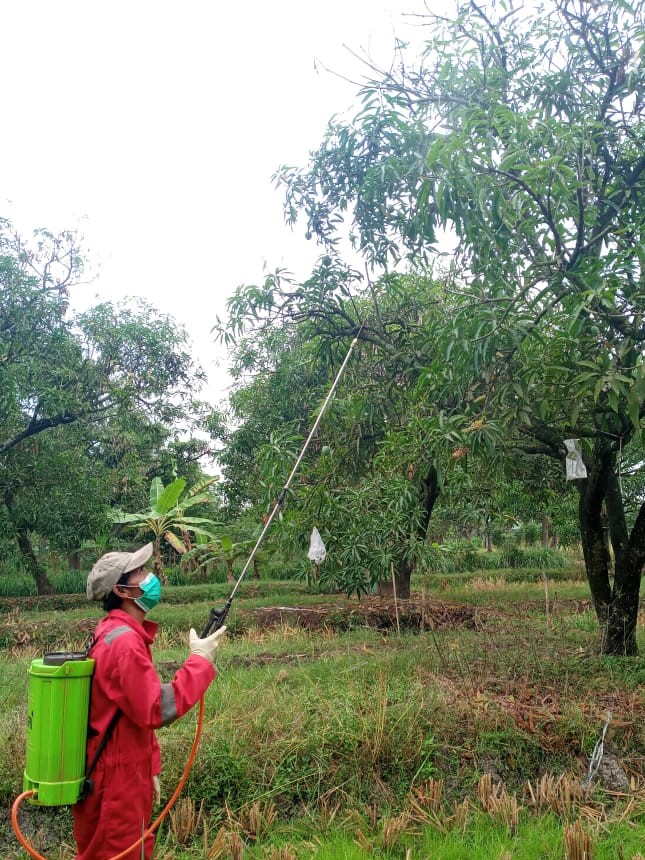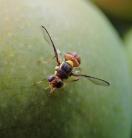Australia & SE Asia join to control mango pest

An ACIAR-supported project is showing promising results in reducing fruit fly damage to mangoes grown in parts of Indonesia and the Philippines.
Nearly 5 million growers across the two countries depend on mangoes as a source of income, a majority being resource-poor smallholder farmers.
Reducing the damage and impacts caused by fruit flies can decrease food loss, improve fruit quality, and boost farmer livelihoods.
The research is showing that by using a systems approach with male lures, targeted protein bait spraying, sanitation and monitoring, farmers can greatly reduce fruit fly populations and infestations to negligible levels.
Such activities could be scaled out across the Asia-Pacific region and complement other efforts to improve fruit quality and yield.
ACIAR Research Program Manager for Horticulture Irene Kernot said the key is combining lures and baits over specified areas. Such Area Wide Management programs mean the fruit fly population is reduced over the whole treated area and provides a good alternative to chemical cover sprays.
She said this project is already delivering better quality fruit to market.
‘In Indonesia growers can now leave their local variety of mango ‘Gedong Gincu’ on the tree a little longer. This allows them to harvest and sell more mature fruit with better blush at a higher price,’ she said.
Project leader Stefano De Faveri, Department of Agriculture and Fisheries Queensland, said teams in both Indonesia and the Philippines have been able to maintain fruit fly populations and infestations at low levels compared to farms that are not participating in the program.
The acting project leader of implementation in the field in Indonesia, Dr Affandi, Indonesian Tropical Fruits Research Institute, said areas in Indonesia not treated by the Area Wide Management program saw damage to mango crops reaching as high as 67%. However, in areas covered by the program, damage falls to 0–0.2% within six months of implementation.
‘Our farmer group who apply the Area Wide Management technology are really satisfied with the result,’ said Dr Affandi.
The project teams have engaged mango farmer groups, decision makers as well as Government Pests and Diseases Observers, through group discussions, training and regular online ‘Fruits Talks’ (hosted in Indonesia by the Indonesian Tropical Fruits Research Institute and Indonesian Directorate General for Horticulture).
Mr De Faveri said the dedication of local partners and supporters means the research could continue despite COVID-19. These people include the West Java farm leader, Mr Waryana at Krasak, and the Cirebon pest observer, Mr Cecep, who have taken over the local research under supervision from the research team in Solok, West Sumatra. They have also promoted the benefits of the research findings to other farmers in the district. This model of participatory research has ensured the program continued during this difficult period.
The project is also seeking to solve other fruit quality issues including nutrition, diseases, post-harvest handling and post-harvest diseases.
Trials in the Philippines on the ‘Carabao’ mango variety, the most widely grown and loved variety in the country, have shown better fruit retention in produce that is packaged with a reusable white paper bag at a later stage of development relative to no bagging. Plus, there was a greater percentage of export grade fruit when it was bagged with the reusable paper bags.
‘Initial results from our fruit bagging experiments show a higher export quality grade (no defects to very light defects) of up to 75% with the use of the reusable bags, relative to 66% in newspaper-wrapped fruit’, said Philippines postharvest component leader Dr Emma Ruth Bayogan from the University of the Philippines Mindanao.
The team is also testing hot water treatments and post-harvest fungicides to improve the shelf life of the fruit.
Dr Bayogan said that from these treatments they are seeing reduced post-harvest disease in fruit and 6 to 7 days longer shelf life compared to the non-heat treated fruit, which significantly improves the export potential of the ‘Carabao’ mangoes.’ Trials are currently being planned for combination hot water and fungicide treatments.
Ms Kernot said each partner country is sharing their results and experiences, which will help other countries to reap the same benefits.
‘The project will compile a best practice guide for Area Wide Management of fruit flies to help share the knowledge gained.’
Ms Kernot said knowledge gained via the project also helps Australian industries affected by fruit fly.
‘Research on alternative protein bait treatments and improved fruit fly lures as well as work on understanding how tree architecture affects pest and beneficial insects support Australian industry.’
The project is funded through the ACIAR Horticulture Research Program and is scheduled to run until 2030. Learn more via the ACIAR website.
Key project partners are Eastern Mennonite University, Indonesian Centre for Agriculture Socio Economic and Policy Studies, Indonesian Centre for Horticulture Research and Development, Provincial Agriculturist Office, University of Gadjah Mada, Provincial Government of Davao del Norte, University of the Philippines-Los Banos, University of the Philippines – Mindanao, and the Philippine Council for Agriculture, Aquatic and Natural Resources Research and Development. Read more about the project here.




